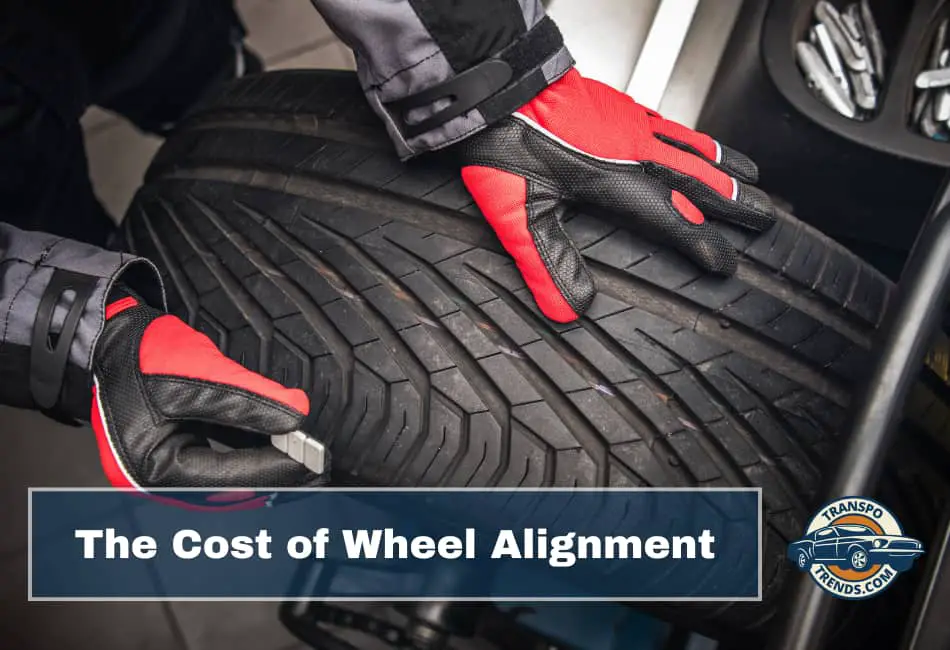When it comes to car maintenance, wheel alignment often flies under the radar. Oil changes and brake checks get most of the attention, but alignment quietly plays a major role in how your vehicle drives, how long your tires last, and how much you spend at the pump.
If you have ever wondered, “How much is a wheel alignment, and is it really worth it?” — you are not alone.
In this guide, we will break down what you can expect to pay for wheel alignment, explain why it matters, and help you understand how a small investment today can save you hundreds of dollars (and a few headaches) down the road.
How Much Does Wheel Alignment Cost?
On average, a two-wheel (front-end) alignment will cost you between $50 and $100, while a four-wheel alignment generally runs $100 to $200.
The price difference comes down to how much work is involved and whether the shop adjusts the front wheels only or all four.
For most modern vehicles, especially those with independent rear suspension, a four-wheel alignment is recommended to ensure all tires are properly adjusted.
If you are visiting a dealership, expect to pay closer to the high end — around $183 on average.
Independent mechanics and national chains like Firestone, Pep Boys, or Goodyear often offer competitive prices, sometimes 20% to 30% less than dealer rates.
Additionally, many tire centers offer lifetime alignment packages for about $200 to $250. These packages cover unlimited alignments for as long as you own the vehicle, which can pay for themselves if you plan to keep the car for several years and maintain it regularly.
Why Prices Vary by Region and Shop
Where you live matters. If you are in a major city like Los Angeles or New York, expect to pay more simply due to higher labor costs. In smaller towns or rural areas, alignment services are typically less expensive.
Additionally, the type of shop you visit can influence the price. Dealerships often charge more because they use original manufacturer equipment, while independent shops and chains may use aftermarket tools that work just as effectively.
Pro tip: Call around and ask for estimates. Many shops post their prices online, making it easier than ever to compare rates in your area.
What Does a Wheel Alignment Include?
A standard wheel alignment service checks and adjusts three critical angles:
- Camber — the inward or outward tilt of the tire when viewed from the front.
- Caster — the angle of your steering pivot when viewed from the side.
- Toe — the direction the tires point compared to each other.
The technician uses precision tools, often with laser or camera technology, to measure these angles and make small adjustments until they match your vehicle’s factory specifications.
Many shops will also include a steering and suspension check to ensure no worn parts (like tie rods or ball joints) are contributing to alignment problems.
Optional Add-Ons and Upsells
When you go in for an alignment, you may be offered additional services such as:
- Tire rotation — Recommended every 5,000 to 7,500 miles, rotating your tires ensures even tread wear.
- Wheel balancing — If you feel vibrations while driving, balancing can help smooth things out by evenly distributing weight across your wheels.
- Alignment reports — Some shops will give you a printout showing before-and-after measurements, so you can see the improvement.
Lifetime alignment packages can also be a good deal — but only if you plan to keep the car long-term and visit the same shop regularly.
Why Alignment Is Worth the Money
Now, let us get to the heart of the matter: Why bother with wheel alignment at all?
Here is what you get when you invest in regular alignments:
Extends Tire Life
Misaligned wheels cause uneven tire wear, especially on the edges of the tread. That means you will need to replace your tires far sooner than expected — and with a full set of tires costing $500 or more, that is no small expense. Regular alignment helps your tires last as long as possible.
Improves Handling and Safety
Proper alignment keeps your vehicle tracking straight, making it easier to steer and control. It also helps your tires maintain even contact with the road, improving grip in rain or snow and reducing the risk of hydroplaning. The National Highway Traffic Safety Administration (NHTSA) highlights alignment as critical for preventing drift or pull on the road.
Boosts Fuel Efficiency
Yes, alignment can even save you at the pump. When your wheels are out of alignment, your car’s engine works harder to move forward. According to the U.S. Department of Energy, properly aligned wheels can improve fuel economy by up to 3%.
Prevents Damage to Suspension
Driving with misaligned wheels puts stress on suspension parts like shocks, struts, and control arms. Over time, that extra stress can lead to expensive repairs. Spending $100 on alignment today can save you $1,000 or more in suspension repairs tomorrow.
How Often Should You Get a Wheel Alignment?
Most experts recommend having your alignment checked at least once a year or every 6,000 to 12,000 miles, whichever comes first. However, your driving habits and environment can shorten that timeline.
Here are some helpful guidelines:
- City drivers: If you regularly navigate potholes or hit curbs, consider alignment every 6,000 miles.
- Highway drivers: You may be able to stretch intervals to 12,000 miles, thanks to smoother roads.
- After installing new tires or suspension parts: Always get an alignment to protect your investment.
- If you notice warning signs: Pulling to one side, a crooked steering wheel, or uneven tire wear means it is time for an alignment right away.
Aligning your wheels when you rotate your tires or change your oil is a smart habit. Many shops even offer discounted packages if you bundle services together.
Long-Term Financial Benefits
While it is tempting to skip alignment to save a few dollars upfront, the long-term benefits outweigh the short-term savings.
- Tire replacement: Extending tire life by 20–30% means you replace tires less often.
- Fuel savings: Even a small boost in fuel economy adds up over tens of thousands of miles.
- Avoiding repairs: Preventing premature wear on suspension components can save you hundreds, if not thousands, over the life of your vehicle.
In short, alignment pays for itself — sometimes more than once.
When to Schedule Alignment
Here’s a quick cheat sheet to remember:
- Once a year, or at least every 6,000–12,000 miles.
- After getting new tires, suspension, or steering work.
- When you feel the car pulling, shaking, or drifting.
- After hitting a major pothole or curb.

